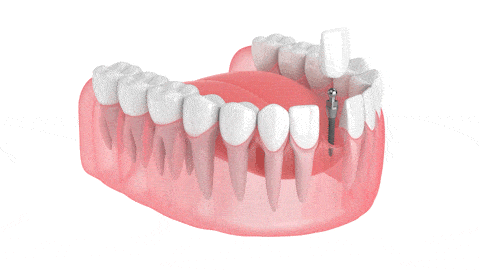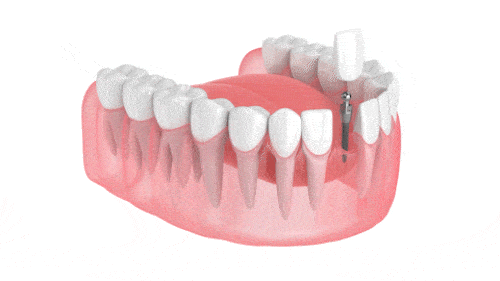Mini Dental Implants (1)
Those amazing minis! This blog session will deal with small diameter (mini) implants. Mini implants by definition are implants less than 3.0 mm in diameter. I feel this is somewhat of a misnomer as the minis differ from conventional implants in a number of ways. The biggest difference is that they are ONE PIECE implants. There are no screws, abutments, healing caps, etc. that are needed with conventional implants. As such, they are less complicated, require less chair time, and are less expensive to place and restore. Let’s begin by comparing the surgical placement of the mini vs. the conventional.
 Placement of a conventional implant requires drilling a hole in the jaw that is the FULL length and roughly the full diameter of the implant. This hole (osteotomy) requires 4-6 months to heal around the implant. The hole for a mini implant is much smaller and only goes half the depth of the implant; think of a self-tapping screw. This results in a tight fit and from a practical standpoint, immediate integration of the implant in most cases. That allows us to take an impression the same day and have final restorations available within weeks as opposed to months. This simple, fast, painless placement procedure is a major advantage of minis. It’s also what makes them less expensive due to less chair time involved. I will expand on mini advantages in my next blog.
Placement of a conventional implant requires drilling a hole in the jaw that is the FULL length and roughly the full diameter of the implant. This hole (osteotomy) requires 4-6 months to heal around the implant. The hole for a mini implant is much smaller and only goes half the depth of the implant; think of a self-tapping screw. This results in a tight fit and from a practical standpoint, immediate integration of the implant in most cases. That allows us to take an impression the same day and have final restorations available within weeks as opposed to months. This simple, fast, painless placement procedure is a major advantage of minis. It’s also what makes them less expensive due to less chair time involved. I will expand on mini advantages in my next blog.
Mini Dental Implants (2)
In my last blog on mini implants I pointed out some of their advantages over conventional implants. In this installment, I’d like to expand on the advantages and, at the end, mention some of the drawbacks.
Let’s begin with the advantage of safety. When placing any implant there are anatomical structures that must be taken into account, especially in the lower jaw. The nerve that supplies feeling to the lower teeth, lips, and chin is located near the root tips of the lower teeth. This nerve must be avoided during implant placement to prevent it from being damaged. Since mini implants are self-tapping, inadvertent contact between the implant and nerve rarely causes permanent nerve damage. The tip of the implant merely pushes the nerve to the side as opposed to severing it. If a problem is encountered, the implant can just be “unscrewed” a little and contact with the nerve eliminated.
Another advantage to minis is their versatility. They can be used to anchor bridges, stabilize dentures, replace single or multiple missing teeth and/or used as support for full arch (round house) tooth replacement.
Lastly, mini implants can be removed relatively easy if the need should arise. In most cases they can simply be “unscrewed.” This is not the case with conventional implants which require surgery to remove.
So “what are the disadvantages of mini implants,” you might ask? The major drawback is that they require relatively strong, dense bone in order to integrate. Soft bone permits the implant to move during healing and therefore not integrate with the bone. This results in the implant becoming loose and needing to be removed.
Another potential drawback to minis is breakage due to uncontrolled bruxism. Heavy jawed and grinders wreak havoc on all dental work. Minis are no exception. The smaller diameter mini implants should not be used on these patients. This problem has, however, been somewhat mitigated with the advent of larger diameter minis.
Lastly, mini implants used for crowns and bridges are more difficult to clean around. The addition of a water flosser to regular brushing and flossing virtually eliminates this concern. These are readily available at most stores and online. I hope these blogs have shed some light on implants in general and minis in particular.


Do you have a facility closer to me? I’m in New Haven